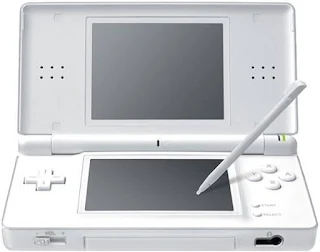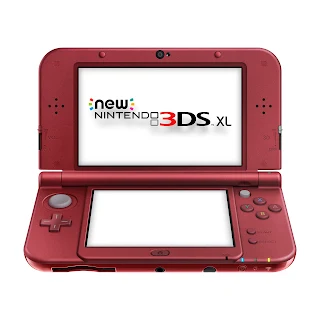There’s no denying how successful the Nintendo 3DS ended up being in the end. The 3DS was assessable to a lot of players, and helped introduce new fans to the world of gaming. Although it had a rocky launch and turned people off with its higher price tag, it overcame those setbacks and became a beloved piece of hardware.
However, that doesn’t mean there wasn’t confusion!
One thing a lot of people didn’t realize about the 3DS is that it was a new console. While gamers in the know kept up with the news and followed it since it was announced—your average consumer had no idea what the thing was. In fact, many still don’t know!
But why is that? What made the 3DS so confusing? Well, today I want to break it down and take a look at exactly what happened.
The Nintendo DS:
The Nintendo DS released in late 2004, and was a replacement for the Game Boy line of handhelds. The DS could play Game Boy Advance games, so people were more willing to ditch their old handheld for the new stronger one. This version of the DS came in multiple colors, and was the first handheld to reach a wider audience.
The DS featured a verity of games, and didn’t focus just on existing Nintendo fans. Thanks to its touch screen controls, and selection of games aimed at everyone, it became a household staple for a lot of people. Families would buy multiple DS consoles for themselves and their kids, and thanks to Nintendo Wi-Fi and local wireless connection everyone could play together!
Really it’s no wonder the DS became as popular as it did, and because of that popularity it didn’t stop there.
The DS Lite:
The first revision for the DS was the DS Lite. This DS was thinner, features a new sleek design, came in a wider range of colors, and had a better quality screen. It was perfect for those who didn’t have a DS yet, but its redesign was also enticing to those who already had one. With it being released in 2006, nearly two years after the original DS, purchasing one wasn’t a bad option. At that time the DS still had a lot of life left in it, so why not upgrade?
Enter the DSi and the XL:
In the year 2009 yet another DS model hit the market. This new version was called the “DSi” and came in two models. The “standard” DSi, and a brand new “DSi XL.” While the standard model was similar in size to the DS Lite, the XL was quite a bit larger with a bigger screen. This version of the DS was even slimmer than the DS Lite, it removed the Game Boy Advance slot, and featured cameras for the first time. This weren’t the only differences however…
Unlike the past DS models, the DSi featured a new Home Screen with access to a new digital DSi Shop. Here you could download new digital games directly to the DS. Some games also made use of the new camera feature, while other games had other improvements specifically for the DSi. These “DSi Enhanced” games were pretty slim overall, but it didn’t change the fact that those who didn’t upgrade would miss out on some things. Once again the DS still had quite a bit of life left in it, but the DSi was about to be replaced.
The 3DS:
In 2011 Nintendo finally released their next handheld console; the "Nintendo 3DS." Keeping with the "DS" naming scheme, the 3DS was a brand new console that was more powerful than the previous DS. It was similar in size to the original DS and DS Lite, while having a wider top screen that was also capable of producing a glasses free 3D effect. Nintendo marketed this 3D effect as the main selling point of the console, and that lead to the misconception that the 3DS was a DS with 3D... Except it wasn't.
Again, it was a completely new console capable of playing more demanding games, with a much stronger graphics card. While 3D games on the DS tend to be low textured and with a low polygon count, the 3DS could run games like Resident Evil Revelations that nearly rivaled how games looked on the GameCube. It was a substantial upgrade, and a lot of people didn't realize that.
And that lead to the first problem!
During that first year of release, I can't count how many times I walked into a store and saw someone arguing with a worker about how their new game won't work on the DS. I remember one time in particular where this lady had just bought three brand new DS systems for her kids, and she bought each one of them a copy of the 3DS game they wanted. She was NOT happy and was literally screaming at the Walmart worker who had sold them to her just the day before. It wasn't pretty... And it didn't stop there.
Eventually local stores near me started putting up signs to let people know that 3DS games wouldn't work on the DS, while others just hand wrote it on the display itself. I'm sure it helped in some cases, but many people still didn't realize that the 3DS was a new console. Mixed with it's higher price, and the fact that DS games were still coming out, they really didn't have a reason to upgrade anyway!
But then things changed.
The 3DS XL:
The next 3DS model to release was the 3DS XL in 2012. Like the DSi XL years before, this model featured a larger screen, and released around the same time that the standard 3DS had a price drop. This made the 3DS much more affordable, with the 3DS XL now taking the 3DS's place price wise. Those who bought a 3DS within the first year were qualified for the Ambassador Program, and were given twenty free games (including Game Boy Advance games) to make up for the difference in price and reward the early adopters of the console.
By this point it was clear that the 3DS XL was still a 3DS however, so things actually got a bit better here; however, this wouldn't last.
The 2DS:
The 2DS was the first 3DS revision, and was a bit different. As the name implies, the 3D feature was removed, and instead of having a clam shell design like the rest of the DS line, the 2DS was wedge shaped. This was seen as a cheaper "budget" release, and was aimed at those who didn't care about the 3D feature, but still wanted to play the new 3DS games.
Again, at this point most understood that the 3DS was a new console (and the DS console and games were fading out), but calling it a 2DS could lead to some confusion. Still, that's not where the problems began again.
The "New" 3DS:
In 2015 Nintendo released yet another 3DS model, but this time it was a lot more similar to the DSi. Rather than being just a new 3DS; the "New" 3DS included upgrades to the hardware. Over the years multiple games released that had support for right stick controls, and while the "Circle Pad Pro" attachment did release to allow for this, the New 3DS went ahead and included a right "nub" built into the console itself.
The New 3DS was also slightly stronger than the original 3DS, which made it so some games would only run on the New 3DS. Games like Xenoblade Chronicles could not be played on other 3DS models, and games like Hyrule Warriors... Well... You could "play" them on the 3DS, but you were better off not even trying.
Overall the New 3DS was a replacement for the original 3DS, but it wasn't a forced upgrade. Those who stuck with their original 3DS wouldn't be able to play some of the newer games, but other than that, it was still a 3DS.
Originally the "New 3DS XL" was the first to release in the US, but months later the "standard" New 3DS released as well. Just as with the DSi, the XL version was slightly larger with a bigger screen, while the standard retained a similar form factor to that of the DS Lite.
The New 2DS:
And here we are at the "New" 2DS! Like the 2DS before it, the New 2DS was basically a New 3DS, but without the 3D effect. Released in 2017 as an "XL" version, it returned to the clam shell design of the rest of the DS line, while still remaining a budget console.
The New 2DS would be the final 3DS console to release, but it's name still presented a problem.
While many New 3DS exclusive games made sure to let everyone know on the box that they would only work in a New 3DS; they failed to mention the New 2DS. The New 2DS is a New 3DS, but named differently as it is a different model. This lead to people not realizing that they could play New 3DS games on it, which in return caused people to overlook games they would've loved to play.
Possibly due to how much of a mess going to the 3DS was for them, I personally saw store employees telling their customers not to buy New 3DS games for their kids who owned a New 2DS. (Or they would tell them at checkout while they were buying the New 2DS with the game.) I tried to let people know that it wasn't the case, but usually that resulted in the employees getting mad at me and calling me a liar... But whatever.
Looking at the DS as a Whole:
Really, it's no wonder that people got so confused with the DS and 3DS. If you look at it as a whole, the release went as follows:
DS, DS Lite, DSi, DSi XL, 3DS, 3DS XL, 2DS, New 3DS XL, New 3DS, New 2DS. If you were to ask the average person which came out when, what would they say? Looking at this mess it makes sense that the DS came out first, while the DS Lite, and i could be flipped around. The 2DS must come next, with the New 2DS releasing after? Except the New 2DS was actually the final model released, and is not the same as a 2DS or a 3DS... Which again, you'd expect the 3DS to be after the 2DS, but it actually came first.
It's a lot to keep straight, and if you put each console on the shelf and told someone to buy the latest one, that might not be an easy choice. Getting a New 3DS would have you covered of course, but as the New 2DS nudged it out, that wasn't an option for many people. Chances are someone would buy a regular 3DS over the New 2DS, and stores wouldn't tell them otherwise.
Looking to the Future:
While we don't know what the future holds, hopefully Nintendo can avoid this type of confusion going forward. It happened with the Wii and Wii U also, but that's a story for another time. With the Nintendo Switch it became clear that it was a new console, and served as a replacement for both the Wii U and the 3DS line. Since then it's quickly become one of Nintendo's most successful consoles to date, with the "Switch 2" being the next thing fans eagerly await.
Nintendo's come such a long way since the days of the DS, and the future is looking bright.











Post a Comment